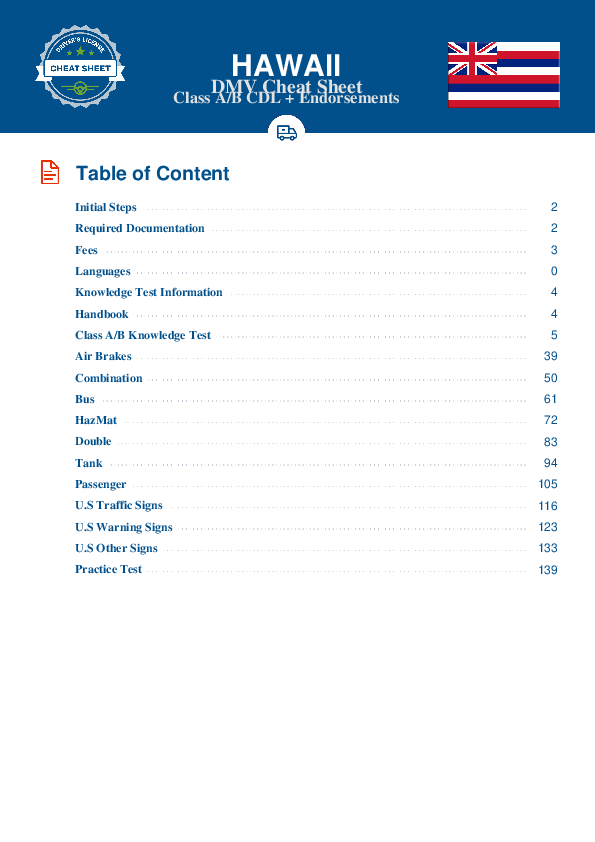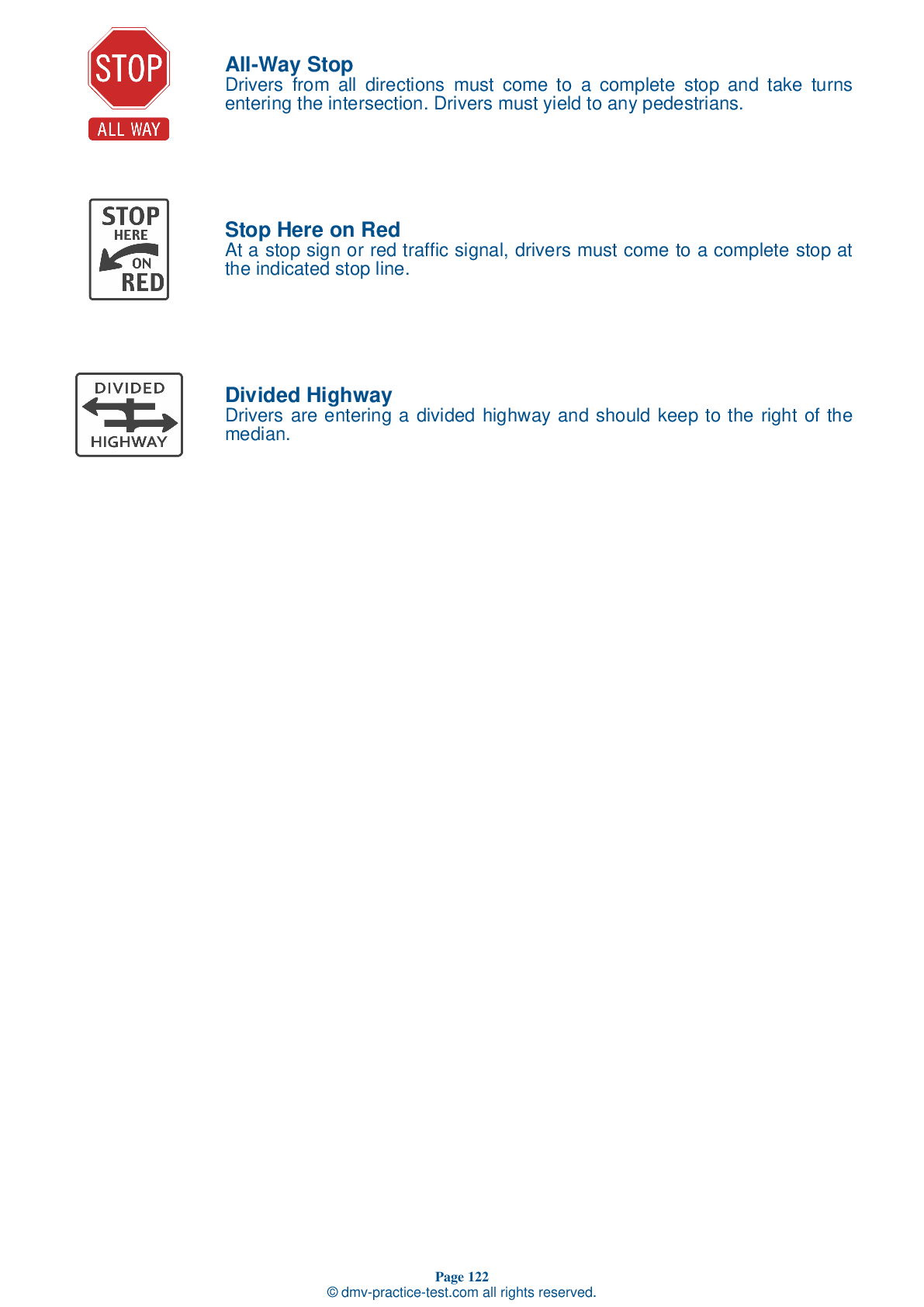Tank Endorsement Test | Hawaii 2025 #1 Page 3 of 3
Train for FREE with our Hawaii tank endorsement practice test online. The official exam test consists of several obligatory parts, with all of them checking your knowledge of different blocks of road rules. If you need to obtain a HI tank license in 2025, practice as much as possible. Free sample tests published on our website will help you check and improve your knowledge and boost your grades. Please bear in mind that DMV requirements for issuing a CDL tank vehicle endorsement may vary from state to state.
15 . Forward-and-back surge is usually strong in:
Unbaffled tanks, which have no internal dividers, are the most vulnerable to forward-and-back surge.
16 . Antifreeze helps to keep an engine functioning properly:
It is always important to have enough water and antifreeze in a vehicle's cooling system. Despite the name, antifreeze is beneficial to an engine even in hot weather.
17 . Which of the following will not help prevent a rig from rolling over?
To help prevent a rig from rolling over, you should keep the weight of the cargo as close to the ground as possible when loading. You should also drive slowly around turns.
18 . Most heavy trucks with manual transmissions require ____ to change gears.
Most heavy vehicles with manual transmissions require double clutching to shift gears. Learning to effectively change gears by double clutching takes practice.
19 . If driving so slowly that you could impede other drivers, you should:
If you must drive so slowly that you will impede the flow of traffic, you should turn on your four-way flashers to alert drivers behind you (as long as local laws allow the use of flashers).
20 . Which of the following is not a sign of a driver becoming tired?
Potential warning signs of fatigued driving include difficulty focusing; frequent blinking or heavy eyelids; yawning repeatedly or rubbing one's eyes; daydreaming; wandering or disconnected thinking; trouble remembering the last few miles driven; missing exits or traffic signs; having trouble keeping one's head up; drifting from one's lane; following a vehicle too closely; hitting a shoulder rumble strip; and feeling restless or irritable.
See the exact questions that will be on the 2025 Hawaii DMV exam.
99.2% of people who use the cheat sheet pass the FIRST TIME
Lillian MCcranie explains how our CDL study guide was helpful in passing the exam and recommends it to everyone.
Cameron tells us how he purchased the CDL exam, and found it to be a useful tool which helped him pass the exam and find a job.



